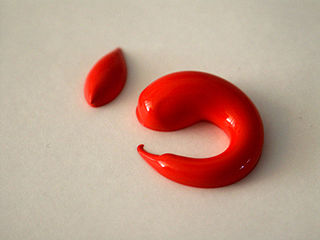 W
WAcrylic paint is a fast-drying paint made of pigment suspended in acrylic polymer emulsion and plasticizers, silicon oils, defoamers, stabilizers, or metal soaps. Most acrylic paints are water-based, but become water-resistant when dry. Depending on how much the paint is diluted with water, or modified with acrylic gels, mediums, or pastes, the finished acrylic painting can resemble a watercolor, a gouache, or an oil painting, or have its own unique characteristics not attainable with other media.
 W
WAerosol paint is paint that comes in a sealed, pressurized container and is released in an aerosol spray when a valve button is depressed. Aerosol painting is one form of spray painting; it leaves a smooth, even coat, unlike many traditional rolled and brushed paints. Standard-sized cans are lightweight, portable, inexpensive, and easy to store. Aerosol primer can be applied directly to bare metal and many plastics.
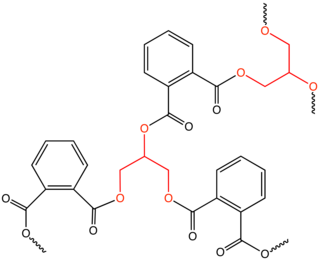 W
WAn alkyd is a polyester resin modified by the addition of fatty acids and other components. Alkyds are derived from polyols and organic acids including dicarboxylic acids or carboxylic acid anhydride and triglyceride oils. The term alkyd is a modification of the original name "alcid", reflecting the fact that they are derived from alcohol and organic acids. The inclusion of a fatty acid confers a tendency to form flexible coatings. Alkyds are used in paints, varnishes and in moulds for casting. They are the dominant resin or binder in most commercial oil-based coatings. Approximately 200,000 tons of alkyd resins are produced each year. The original alkyds were compounds of glycerol and phthalic acid sold under the name Glyptal. These were sold as substitutes for the darker-colored copal resins, thus creating alkyd varnishes that were much paler in colour. From these, the alkyds that are known today were developed.
 W
WAutomotive paint is paint used on automobiles for both protection and decoration purposes. Water-based acrylic polyurethane enamel paint is currently the most widely used paint for reasons including reducing paint's environmental impact.
 W
WA brush is a common tool with bristles, wire or other filaments. It generally consists of a handle or block to which filaments are affixed in either a parallel or perpendicular orientation, depending on the way the brush is to be gripped during use. The material of both the block and bristles or filaments is chosen to withstand hazards of its intended use, such as corrosive chemicals, heat or abrasion. It is used for cleaning, grooming hair, make up, painting, surface finishing and for many other purposes. It is one of the most basic and versatile tools in use today, and the average household may contain several dozen varieties.
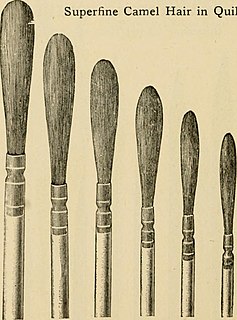 W
WA camel-hair brush is a type of paintbrush with soft bristles made from natural hairs, usually squirrel. Camel hair is not a suitable material, although historically camel was used for ancient Chinese ink brushes. It is a widely used brush in art, but is considered inferior to the more expensive sable and ox-hair brushes. In some niche applications, such as pinstriping, camel hair is an ideal brush. Camel-hair brushes have numerous uses outside of art, particularly dusting where a soft brush is needed for delicate objects or skin.
 W
WCanvas is an extremely durable plain-woven fabric used for making sails, tents, marquees, backpacks, shelters, as a support for oil painting and for other items for which sturdiness is required, as well as in such fashion objects as handbags, electronic device cases, and shoes. It is also popularly used by artists as a painting surface, typically stretched across a wooden frame.
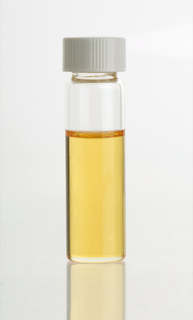 W
WCedar oil, also known as cedarwood oil, is an essential oil derived from various types of conifers, most in the pine or cypress botanical families. It is produced from the foliage, and sometimes the wood, roots, and stumps left after logging of trees for timber. It has many uses in medicine, art, industry, and perfumery, and while the characteristics of oils derived from various species may themselves vary, all have some degree of bactericidal and pesticidal effects.
 W
WA Claude glass is a small mirror, slightly convex in shape, with its surface tinted a dark colour. Bound up like a pocket-book or in a carrying case, Claude glasses were used by artists, travelers and connoisseurs of landscape and landscape painting. Claude glasses have the effect of reducing and simplifying the colour and tonal range of scenes and scenery to give them a painterly quality. The user would turn their back on the scene to observe the framed view through the tinted mirror—in a sort of pre-photographic lens—which added the picturesque aesthetic of a subtle gradation of tones.
 W
WDammar, also called dammar gum, or damar gum, is a resin obtained from the tree family Dipterocarpaceae in India and East Asia, principally those of the genera Shorea or Hopea. Most is produced by tapping trees; however, some is collected in fossilised form on the ground. The gum varies in colour from clear to pale yellow, while the fossilised form is grey-brown. Dammar gum is a triterpenoid resin, containing many triterpenes and their oxidation products. Many of them are low molecular weight compounds, but dammar also contains a polymeric fraction, composed of polycadinene. The name dammar is a Malay word meaning ‘resin’ or ‘torch made from resin’.
 W
WDanish oil is a wood finishing oil, often made of tung oil or polymerized linseed oil. Because there is no defined formulation, its composition varies among manufacturers.
 W
WAn oil dipper is used to hold a supply of turpentine, oil or painting medium, fastened to the painter's palette.
 W
WDistemper is a decorative paint and a historical medium for painting pictures, and contrasted with tempera. The binder may be glues of vegetable or animal origin. Soft distemper is not abrasion resistant and may include binders such as chalk, ground pigments, and animal glue. Hard distemper is stronger and wear-resistant and can include casein or linseed oil as binders.
 W
WA drying oil is an oil that hardens to a tough, solid film after a period of exposure to air, at room temperature. The oil hardens through a chemical reaction in which the components crosslink by the action of oxygen. Drying oils are a key component of oil paint and some varnishes. Some commonly used drying oils include linseed oil, tung oil, poppy seed oil, perilla oil, and walnut oil. Their use has declined over the past several decades, as they have been replaced by alkyd resins and other binders.
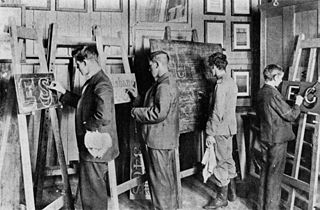 W
WAn easel is an upright support used for displaying and/or fixing something resting upon it, at an angle of about 20° to the vertical. In particular, easels are traditionally used by painters to support a painting while they work on it, normally standing up, and are also sometimes used to display finished paintings. Artists' easels are still typically made of wood, in functional designs that have changed little for centuries, or even millennia, though new materials and designs are available. Easels are typically made from wood, aluminum or steel.
 W
WEncaustic painting, also known as hot wax painting, involves using heated encaustic medium to which colored pigments have been added for creating artworks. Molten medium is applied to a surface—usually prepared wood, though canvas and other materials are sometimes used. The simplest encaustic medium could be made by adding pigments to wax, though recipes most commonly consist of beeswax and damar resin, potentially with other ingredients. For pigmentation, dried powdered pigments can be used, though some artists use pigmented wax, inks, oil paints or other forms of pigmentation.
 W
WFlax, also known as common flax or linseed, is a flowering plant, Linum usitatissimum, in the family Linaceae. It is cultivated as a food and fiber crop in regions of the world with temperate climates. Textiles made from flax are known in Western countries as linen and are traditionally used for bed sheets, underclothes, and table linen. Its oil is known as linseed oil. In addition to referring to the plant, the word "flax" may refer to the unspun fibers of the flax plant. The plant species is known only as a cultivated plant and appears to have been domesticated just once from the wild species Linum bienne, called pale flax. The plants "flax" in New Zealand are, by contrast, members of the genus Phormium.
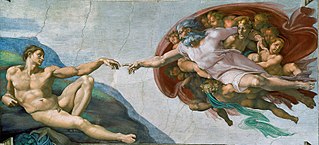 W
WFresco is a technique of mural painting executed upon freshly laid ("wet") lime plaster. Water is used as the vehicle for the dry-powder pigment to merge with the plaster, and with the setting of the plaster, the painting becomes an integral part of the wall. The word fresco is derived from the Italian adjective fresco meaning "fresh", and may thus be contrasted with fresco-secco or secco mural painting techniques, which are applied to dried plaster, to supplement painting in fresco. The fresco technique has been employed since antiquity and is closely associated with Italian Renaissance painting.
 W
WFugitive pigments are impermanent pigments that lighten, darken, or otherwise change in appearance or physicality over time when exposed to environmental conditions, such as light, temperature, humidity, or pollution. Fugitive pigments are present in types of paint, markers, inks etc., which are used for temporary applications. Fugitive inks which washed away when soaked in water were sometimes used deliberately to prevent postage stamps being removed from envelopes by soaking, and reused.
 W
WGesso is a white paint mixture consisting of a binder mixed with chalk, gypsum, pigment, or any combination of these. It is used in painting as a preparation for any number of substrates such as wood panels, canvas and sculpture as a base for paint and other materials that are applied over it.
 W
WGouache, body color, or opaque watercolor, is a water-medium paint consisting of natural pigment, water, a binding agent, and sometimes additional inert material. Gouache is designed to be opaque. Gouache has a considerable history, having been used for at least twelve centuries. It is used most consistently by commercial artists for posters, illustrations, comics, and other design work.
 W
WHousehold hardware is equipment that can be touched or held by hand such as keys, locks, nuts, screws, washers, hinges, latches, handles, wire, chains, belts, plumbing supplies, electrical supplies, tools, utensils, cutlery and machine parts. Household hardware is typically sold in hardware stores.
 W
WInk brushes are paintbrushes used in Chinese calligraphy as well as in Japanese and Korean calligraphy which both have roots in Chinese calligraphy. They are also used in Chinese painting and other brush painting styles. The ink brush was invented in China around 300 B.C. Together with the inkstone, inkstick and Xuan paper, these four writing implements form the Four Treasures of the Study.
 W
WA kolinsky sable-hair brush is a fine artists' paintbrush.
 W
WLinseed oil, also known as flaxseed oil or flax oil, is a colourless to yellowish oil obtained from the dried, ripened seeds of the flax plant. The oil is obtained by pressing, sometimes followed by solvent extraction. Linseed oil is a drying oil, meaning it can polymerize into a solid form. Owing to its polymer-forming properties, linseed oil can be used on its own or blended with combinations of other oils, resins or solvents as an impregnator, drying oil finish or varnish in wood finishing, as a pigment binder in oil paints, as a plasticizer and hardener in putty, and in the manufacture of linoleum. Linseed oil use has declined over the past several decades with increased availability of synthetic alkyd resins—which function similarly but resist yellowing.
 W
WA mahlstick, or maulstick, is a stick with a soft leather or padded head used by painters to support the hand holding the paintbrush. The word derives from the German and Dutch Malstock or maalstok 'painter's stick', from malen 'to paint'.
 W
WMethylethyl ketone oxime is the organic compound with the formula C2H5C(NOH)CH3. This colourless liquid is the oxime derivative of methyl ethyl ketone. MEKO, as it is called in the paint industry, is used to suppress "skinning" of paints: the formation of a skin on paint before it is used. It is particularly used in alkyd paints. MEKO functions by binding the drying agents, metal salts that catalyze the oxidative crosslinking of drying oils. Once the paint is applied to a surface, MEKO evaporates, thereby allowing the drying process to proceed. Other antiskinning agents have been used, including phenolic antioxidants (E.G butylated hydroxytoluene), but these tend to yellow the paint. This oxime is also used in some types of RTV silicones.
 W
WNew materials in 20th-century art were introduced to art making from the very beginning of the century. The introduction of new materials and heretofore non-art materials helped drive change in art during the 20th century. Traditional materials and techniques were not necessarily displaced in the 20th century. Rather, they functioned alongside innovations that came with the 20th century. Such mainstays as oil-on-canvas painting, and sculpting in traditional materials continued right through the 20th century into the 21st century. Furthermore, even "traditional" materials were greatly expanded in the course of the 20th century. The number of pigments available to artists has increased both in quantity and quality, by most reckoning. New formulations for traditional materials especially the commercial availability of acrylic paint have become widely used, introducing initial issues over their stability and longevity.
 W
WOil on copper painting is the process of creating artworks by using oil paints with copper as the substrate. This is sometimes referred to as “copper as canvas” because canvas is the most well known surface material used for oil paintings.
 W
WPaint is any pigmented liquid, liquefiable, or solid mastic composition that, after application to a substrate in a thin layer, converts to a solid film. It is most commonly used to protect, color, or provide texture to objects. Paint can be made or purchased in many colors—and in many different types, such as watercolor or synthetic. Paint is typically stored, sold, and applied as a liquid, but most types dry into a solid. Most paints are either oil-based or water-based and each have distinct characteristics. For one, it is illegal in most municipalities to discard oil-based paint down household drains or sewers. Clean up solvents are also different for water-based paint than they are for oil-based paint. Water-based paints and oil-based paints will cure differently based on the outside ambient temperature of the object being painted Usually the object being painted must be over 10 °C (50 °F), although some manufacturers of external paints/primers claim they can be applied when temperatures are as low as 2 °C (35 °F).
 W
WA paint roller is a paint application tool used for painting large flat surfaces rapidly and efficiently.
 W
WIn paint technology, the sheen is the glossiness of a paint finish. Glossy and flat are typical extreme levels of glossiness of a finish. Glossy paints are shiny and reflect most light in the specular (mirror-like) direction, while on flat paints most of the light diffuses in a range of angles. The gloss level of paint can also affect its apparent colour.
 W
WPaint stripper, or paint remover, is a chemical product designed to remove paint, finishes, and coatings while also cleaning the underlying surface.
 W
WA paintbrush is a brush used to apply paint or sometimes ink. A paintbrush is usually made by clamping the bristles to a handle with a ferrule. They are available in various sizes, shapes, and materials. Thicker ones are used for filling in, and thinner ones are used for details. They may be subdivided into decorators' brushes used for painting and decorating and artists' brushes use for visual art.
 W
WA painting knife is an artist's tool with a flexible steel blade used to apply paint to the canvas.
 W
WA palette, in the original sense of the word, is a rigid, flat surface on which a painter arranges and mixes paints. A palette is usually made of wood, plastic, ceramic, or other hard, inert, nonporous material, and can vary greatly in size and shape. The most commonly known type of painter's palette is made of a thin wood board designed to be held in the artist's hand and rest on the artist's arm. Watercolor palettes are generally made of plastic or porcelain with rectangular or wheel format with built in wells and mixing areas for colors.
 W
WA panel painting is a painting made on a flat panel made of wood, either a single piece, or a number of pieces joined together. Until canvas became the more popular support medium in the 16th century, it was the normal form of support for a painting not on a wall (fresco) or vellum, which was used for miniatures in illuminated manuscripts and paintings for the framing.
 W
WPastiglia [paˈstiʎʎa], an Italian term meaning "pastework", is low relief decoration, normally modelled in gesso or white lead, applied to build up a surface that may then be gilded or painted, or left plain. The technique was used in a variety of ways in Italy during the Renaissance. The term is mostly found in English applied to gilded work on picture frames or small pieces of furniture such as wooden caskets and cassoni, and also on areas of panel paintings, but there is some divergence as to the meaning of the term between these specialisms.
 W
WA pigment is a colored material that is completely or nearly insoluble in water. In contrast, dyes are typically soluble, at least at some stage in their use. Generally dyes are often organic compounds whereas pigments are often inorganic compounds. Pigments of prehistoric and historic value include ochre, charcoal, and lapis lazuli.
 W
WPowder coating is a type of coating that is applied as a free-flowing, dry powder. Unlike conventional liquid paint which is delivered via an evaporating solvent, powder coating is typically applied electrostatically and then cured under heat or with ultraviolet light. The powder may be a thermoplastic or a thermoset polymer. It is usually used to create a hard finish that is tougher than conventional paint. Powder coating is mainly used for coating of metals, such as household appliances, aluminium extrusions, drum hardware, automobiles, and bicycle frames. Advancements in powder coating technology like UV curable powder coatings allow for other materials such as plastics, composites, carbon fiber, and MDF to be powder coated due to the minimum heat and oven dwell time required to process these components.
 W
WRabbit-skin glue is a sizing that also acts as an adhesive. It is essentially refined rabbit collagen, and was originally used as an ingredient in traditional gesso.
 W
WSpray painting is a painting technique in which a device sprays coating material through the air onto a surface. The most common types employ compressed gas—usually air—to atomize and direct the paint particles.
 W
WA strainer bar is used to construct a wooden stretcher frame used by artists to mount their canvases. They are traditionally a wooden framework support on which an artist fastens a piece of canvas. They are also used for small-scale embroidery to provide steady tension, affixing the edges of the fabric with push-pins or a staple gun before beginning to sew, and then removing it from the frame when the work is complete. Strainer bar frames are usually in the shape of a rectangle, although shaped canvases are also possible.
 W
WA stretcher bar is used to construct a wooden stretcher used by artists to mount their canvases.
 W
WTack cloth is a specialized type of wiping cloth that is treated with a tacky material. It is designed to remove loose particles of dust, dirt and lint that would contaminate a surface that is to be painted, coated, laminated, photo-etched, or otherwise finished.
 W
WThe practice of conserving an unstable painting on panel by transferring it from its original decayed, worm-eaten, cracked, or distorted wood support to canvas or a new panel has been practised since the 18th century. It has now been largely superseded by improved methods of wood conservation.
 W
WTung oil or China wood oil is a drying oil obtained by pressing the seed from the nut of the tung tree. Tung oil hardens upon exposure to air, and the resulting coating is transparent and has a deep, almost wet look. Used mostly for finishing and protecting wood, after numerous coats, the finish can even look plastic-like. Related drying oils include linseed, safflower, poppy, and soybean oils. The oil and its use are believed to have originated in ancient China and appear in the writings of Confucius from about 400 BC. Raw tung oil tends to dry to a fine, wrinkled finish; the English name for this is gas checking; this property was used to make wrinkle finishes, usually by adding excess cobalt drier. To stop this, the oil is heated to gas-proof it, and most oils used for coating are gas-proofed, also known as "boiled".
 W
WTurpentine is a fluid obtained by the distillation of resin harvested from living trees, mainly pines. Mainly used as a specialized solvent, it is also a source of material for organic syntheses.
 W
WVanishing spray, also known as vanishing foam, is a substance applied to an association football pitch in order to provide a temporary visual marker. It is most often used by the referee to indicate the minimum distance that the defending team may position themselves from the ball during a direct free kick, as well as to indicate the spot from where the kick is taken. The spray appears similar to white paint or watered-down shaving foam when initially applied. It completely disappears within a minute, leaving no visible residue behind.
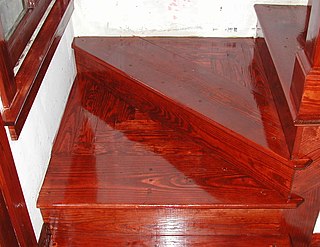 W
WVarnish is a clear transparent hard protective coating or film. It is not a stain. It usually has a yellowish shade from the manufacturing process and materials used, but it may also be pigmented as desired, and is sold commercially in various shades.
 W
WWatercolor paper is paper or substrate onto which an artist applies watercolor paints, pigments or dyes. There are currently many types of paper available that are manufactured for the use with watercolors. Watercolor paper can be made of wood pulp exclusively, or mixed with cotton fibers. Pure cotton watercolor paper is also used by artists though it typically costs more than paper. It is also available as an acid-free medium to help its preservation. Watercolor paper can be described according to the manufacturing process. It can be hot pressed, cold pressed or rough. A number of companies sell watercolor papers, some of them with a long history of production. Paper traditionally comes in either 90, 140 or 300 lb. weights.
 W
WWhite spirit or mineral spirits, also known as mineral turpentine (AU/NZ), turpentine substitute, and petroleum spirits, is a petroleum-derived clear liquid used as a common organic solvent in painting. There are also terms for specific kinds of mineral spirits, including Stoddard solvent and solvent naphtha (petroleum). Mineral spirits are often used as a paint thinner, or as a component thereof, though paint thinner is a broader category of solvent. Odorless mineral spirits (OMS) have been refined to remove the more toxic aromatic compounds, and are recommended for applications such as oil painting.
 W
WWhitewash, or calcimine, kalsomine, calsomine, or lime paint is a type of paint made from slaked lime (calcium hydroxide, Ca(OH)2) or chalk calcium carbonate, (CaCO3), sometimes known as "whiting". Various other additives are sometimes used.